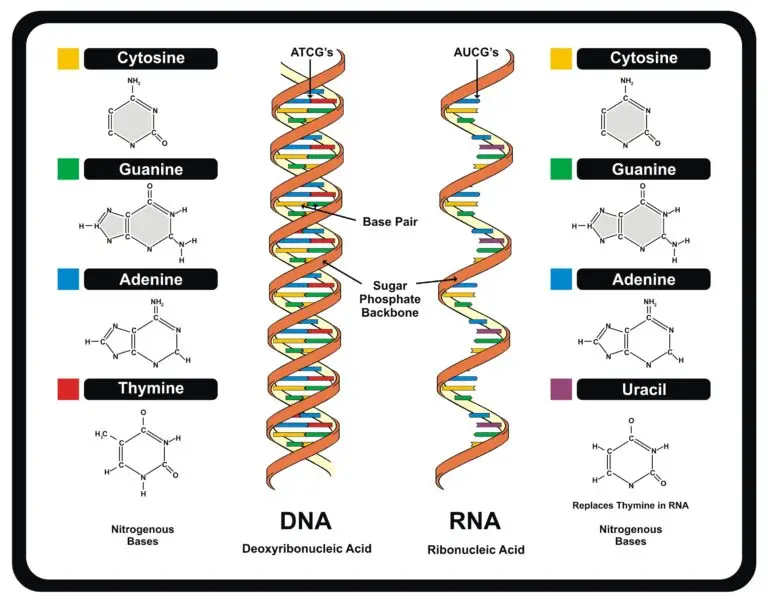Base Pair

Table of Contents
What is an Base Pair?
Base pair refers to the pairing of nucleotide bases between two complementary strands of DNA or, in some cases, RNA. Nucleotides are the building blocks of nucleic acids, such as DNA and RNA. Each nucleotide has three components: a phosphate group, a sugar molecule (deoxyribose in DNA and ribose in RNA), and a nitrogenous base.
DNA & RNA
DNA Base Pairs
The nitrogenous bases in DNA are adenine (A), thymine (T), cytosine (C), and guanine (G). The base pairing rules in DNA are as follows:
- Adenine (A) pairs with Thymine (T)
- Thymine (T) pairs with Adenine (A)
- Cytosine (C) pairs with Guanine (G)
- Guanine (G) pairs with Cytosine (C)
The base pairs are held together by hydrogen bonds: Adenine forms two hydrogen bonds with Thymine, while Guanine forms three hydrogen bonds with Cytosine. This complementary base pairing is crucial for the structure and replication of DNA.
RNA Base Pairs
In RNA, Uracil (U) replaces Thymine (T) as a complementary base to Adenine (A). The base pairing rules in RNA are as follows:
- Adenine (A) pairs with Uracil (U)
- Uracil (U) pairs with Adenine (A)
- Cytosine (C) pairs with Guanine (G)
- Guanine (G) pairs with Cytosine (C)
Nucleotides
Phosphate Group: This is a phosphorus atom bonded to four oxygen atoms, forming a negatively charged group. The phosphate group is responsible for linking nucleotides together through phosphodiester bonds to form the sugar-phosphate backbone of the DNA or RNA strand.
Sugar Molecule:
- In DNA, the sugar molecule is deoxyribose, which has one fewer oxygen atom than ribose.
- In RNA, the sugar molecule is ribose, which contains an additional oxygen atom compared to deoxyribose.
- The sugar molecule provides the backbone structure to which the nitrogenous bases are attached.
Nitrogenous Base:
- The nitrogenous base is the part of the nucleotide that contains nitrogen atoms and contributes to the genetic information carried by DNA and RNA.
- In DNA, there are four nitrogenous bases: adenine (A), thymine (T), cytosine (C), and guanine (G).
- In RNA, thymine is replaced by uracil (U), so the nitrogenous bases are adenine (A), uracil (U), cytosine (C), and guanine (G).
- The nitrogenous bases form specific base pairs in DNA: adenine (A) pairs with thymine (T) through two hydrogen bonds, and cytosine (C) pairs with guanine (G) through three hydrogen bonds. In RNA, adenine (A) pairs with uracil (U) through two hydrogen bonds.
Related Links
What is a Nucleotide?
DNA
Replication
RNA